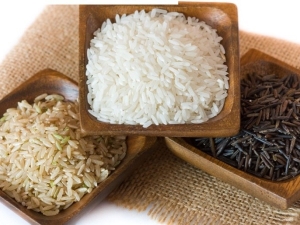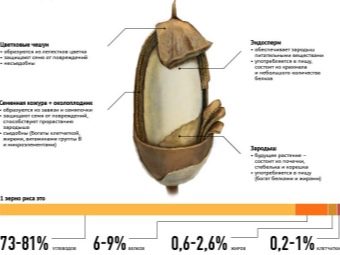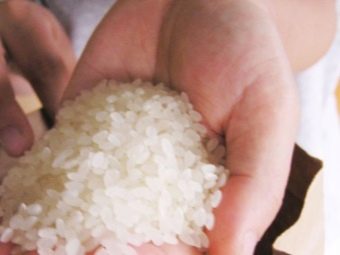Characteristics of rice according to GOST

Chinese grass is a very good product.But only in the case when it strictly complies with the requirements of state regulations. They are very harsh, however, extremely relevant for the consumer.
Special features
GOST 6292-93 was put into operation on 10.21.1993. The official act describes the grain mass, which is optimal for feeding minors and adults. The main point is the strict implementation of sanitary restrictions. The standard variety of rice must be grown without being treated with pesticides. There are several varietal subgroups of cereal.
What are the varieties?
Rice ground groats "Extra" should consist of the nuclear part of the grass with an uneven shell.
From the seeds are removed:
- the film remaining after flowering;
- seed membranes;
- fetal shell;
- almost completely - germ formation and aleurone layer.
The highest category is obtained in the same way, but in this case grain raw materials of 3 and 4 categories are used. For the "Extras" fit only 1 and 2 categories of grain. In this variety of food, colored kernels are acceptable, but their number is strictly defined. The third grade is obtained by applying flaked kernels of 1 and 2 types that do not meet the requirements of the "Extra" level. But there are rules that must be observed in any case.
Mandatory norms
According to the current standard, the moisture content of rice cereals can be a maximum of 14%. This is especially important for products delivered prematurely, and when they are stored beyond the normal shelf life. As for metallic impurities, the largest particle size is no more than 0.03 cm. The mass is limited to 0.4 mg. Increased demands are placed on rice used in baby food.
So, it excludes the presence of damaged kernels, and the acidity index is limited to 2 points. The presence of beetles is unacceptable, and the number of aerobic and partially anaerobic microorganisms amounts to single cells per gram of product. Similarly, only a few units of mold cells should be present.
The presence of E. coli and its related organisms are not allowed.
How should the product be taken, controlled indicators
GOST 1993 prescribes not only certain values of characteristics, but also the order of their confirmation. So, everything that is intended for the nutrition of minors should be delivered with an identification of the fact of refusal from toxic chemicals. The remaining portions of agricultural reagents, other inorganic and fungal toxins should be installed according to the program, which the manufacturer coordinates with the authorities.
Rice quality control involves asking:
- organoleptic characteristics;
- concentrations of mineral and organic impurities;
- fractions of nuclei with reddish stripes and completely red nuclei;
- concentrations of mercury, copper, zinc, lead and cadmium;
- fractions of nuclei that have a standard ratio between length and width.
Length is the shortest distance separating the most distant points of ground grain. Below the width is the widest line across. The measurements are carried out with a micrometer; 20 nuclei are randomly selected for them without mechanical defects. To take each grain is allowed only with tweezers. The selection is made from a sample of cereals weighing 25 g, which is pre-cleaned of all impurities.
GOST for other species
A separate standard, adopted in 1990, refers to a variety of cereal, which is permissible only on the table of adults.
The standard covers:
- collapsed grass;
- unbreakable grass;
- ground grain;
- product subjected or not subjected to steaming.
The technical conditions laid down in this standard do not apply to the sticky variety of rice and to all processed products. A product that has not been cleaned and retained its husk is considered to be undisturbed. Crumbled (another name - shelled) rice is completely free from husk. If the product is polished, the embryo must also be removed from it.Steaming can be carried out for both collapsed and undisturbed grains - it all depends on the technology.
Both the collapsed and polished grains must be 100% clean. Rice, which will go to the table of adults, should be healthy, it does not allow for the presence of live insects that are detected without magnifying devices. Moisture concentration is limited to 15%.
For your information: more stringent requirements for humidity may be associated with climatic conditions, duration of transportation and storage.
In addition to the norms of the standard, there are specific points set in each contract for the supply of goods. In such contracts, the marginal percentage of broken grain is prescribed for each category and all together. When a contract is made for a particular variety or variety of rice cereal, both the average length and the rate of change are signed. Such information should be present in contracts for a reason, its list is also normalized by GOST.
The moisture content of rice grain supplied for adult nutrition is determined by ISO 712. Packaging must be such that the product is not soaked with foreign smells and tastes.
It is also unacceptable to use packaging materials that can poison the stored or transported product. Shipment is allowed only in clean and strong bags, which are thoroughly sewn, sealed. For your information: the most accurate information about the packaging of rice grain is specified in the specialized technical regulations of the vehicle.
Sampling and research
Evaluation of rice characteristics should be carried out only with samples obtained in a reliable manner. They cannot be damaged or altered upon delivery to the laboratory.
All cases are detected in test reports when it is detected:
- odor;
- specific aroma of rice;
- any other abnormality.
Samples are weighed and then mixed until complete homogeneity. If it needs to be reduced, a sample divider is applied. When a grain can be classified into several categories, the general category is assigned to the lowest grade.
Test reports must indicate:
- a complete set of data allowing identification of the sample taken;
- method of obtaining samples and their mass;
- research methods;
- the date and time of taking the cereal to the test;
- date and time of the test itself;
- other points characterizing the research itself;
- a list of factors that could affect the result;
- results of the study.
The determination of the concentration of waxy grains in the steamed type of rice
This procedure is normalized in accordance with ISO 7301-2013. The determination is made by treatment with iodine solution. Only reagents of confirmed analytical quality are suitable for testing.
The solution is prepared using:
- distilled water;
- demineralized water;
- water, identical in purity to the two options listed.
For research take 100 g of polished rice. The volume of working iodine solution is 80 cubic centimeters. Exposure time - 30 seconds. After the indicator staining, it is necessary to weigh the wax-like and non-wax-like rice using a scale with an error of maximum 0.01 g.
On what should be the right crumbly rice, see below.

































